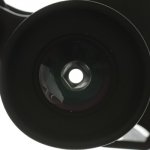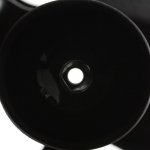David in NC
Well-known member
Thanks to all those who have followed my little quest for binoculars. While I have mentioned it in numerous threads, the main one was here:
http://www.birdforum.net/showthread.php?t=276836
I decided on the Leica 8x42 Ultravid HD and have been waiting until I saved the rest of the needed funds up. I was seriously planning on going with Cameraland NY and one of their demos, but found an even better deal today, Although I only joined the ABA about a week ago, I was on the ABA page today and found a used pair in their listings described (in follow up communication) as "mint" for about $200 less than the CLNY demo, which was already about $450 off MAP pricing.
Soooo...I'm saving about $650 off new pricing... This also meant I could order them TODAY instead of TWO WEEKS FROM TODAY.
As a self-described "kid at Christmas" I'm excited as can be. I hope to have them early to middle of next week.
I am aware of some folks stated experience with used Leicas, but I'm willing to risk this for $650 off new prices.
The owner stated that one objective lens cover was missing, but I can order one pretty easy. Any advice on where (Leica direct? Or other dealers?)
http://www.birdforum.net/showthread.php?t=276836
I decided on the Leica 8x42 Ultravid HD and have been waiting until I saved the rest of the needed funds up. I was seriously planning on going with Cameraland NY and one of their demos, but found an even better deal today, Although I only joined the ABA about a week ago, I was on the ABA page today and found a used pair in their listings described (in follow up communication) as "mint" for about $200 less than the CLNY demo, which was already about $450 off MAP pricing.
Soooo...I'm saving about $650 off new pricing... This also meant I could order them TODAY instead of TWO WEEKS FROM TODAY.
As a self-described "kid at Christmas" I'm excited as can be. I hope to have them early to middle of next week.
I am aware of some folks stated experience with used Leicas, but I'm willing to risk this for $650 off new prices.
The owner stated that one objective lens cover was missing, but I can order one pretty easy. Any advice on where (Leica direct? Or other dealers?)






